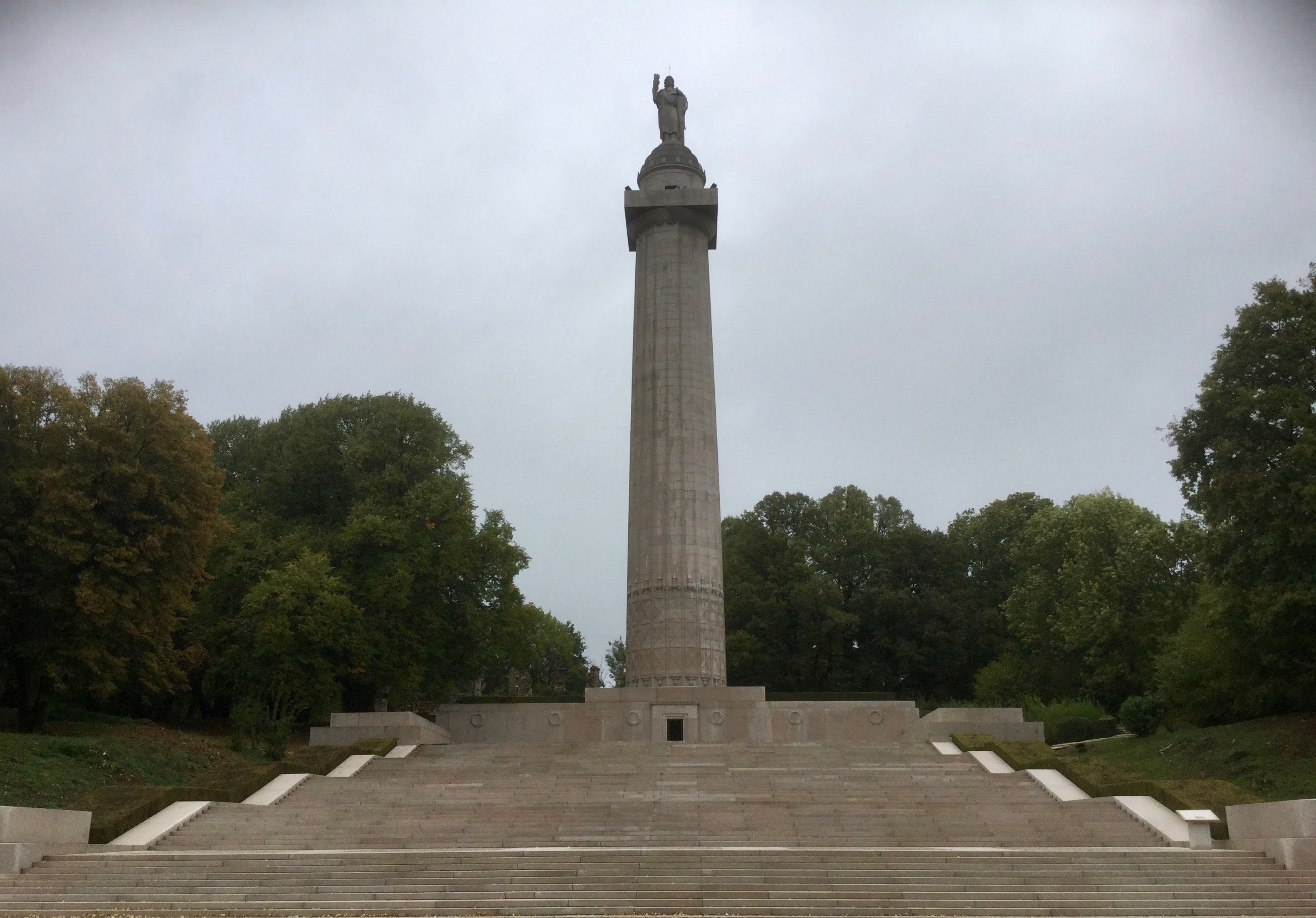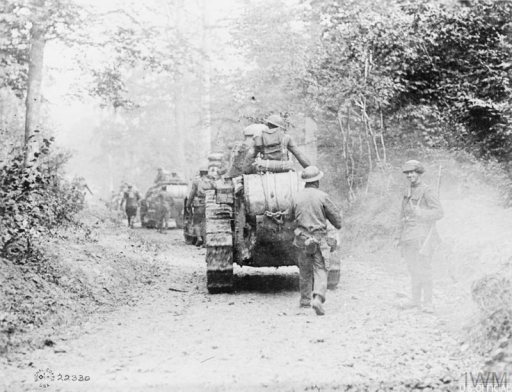On 26 September 1918 troops of the First Army, American Expeditionary Force aided by a corps of French soldiers began a major offensive in north-east France, kicking off what would the last six-week Allied push on the Western Front in WW1. The Meuse-Argonne campaign as it came to be known would enter the history books as the largest and costliest single battle in US history involving a total of 1.2 million American troops and leaving 26,000 of them dead and 90,000 injured. Patrick Gregory describes the battle’s opening stages.
The assault began at 5.30 am on a dank autumn morning, 600,000 men crashing into the hostile terrain north west of Verdun. Three corps of AEF troops led the way, each corps three divisions strong and one in reserve, with more still remaining behind. They would take on the Fifth Army of the German von Gallwitz Group in an area which had been held by German forces since 1914.
The territory they were to attack was treacherous: a mix of forest and unfordable river; of rolling upland interspersed with ravines and defended by well dug-in concealed gun positions.
It was a three-pronged attack. On the left, into the Argonne forest, went Lt Gen Hunter Liggett’s I Corps. On the right-hand side, tackling the hazards presented by German gun batteries along the Meuse river, went III Corps, commanded by Maj Gen Robert Lee Bullard. And through the middle, a comparatively inexperienced three divisions of soldiers in the shape of George Cameron’s V Corps. Meanwhile an additional body of troops, the French XVII Corps, would hold the front north and east of Verdun.
 Map of the Meuse-Argonne battle lines (Image: Collier’s New Encyclopedia 1921/P.F. Collier, via Wikimedia Commons/public domain)
Map of the Meuse-Argonne battle lines (Image: Collier’s New Encyclopedia 1921/P.F. Collier, via Wikimedia Commons/public domain)
The battle plan as set out by AEF commander John Pershing called on his men to push quickly up into this territory. At the top of the corridor through which they would pass lay the main German line, the Kriemhilde Stellung, running west to east between the three villages of Grandpré, Romagne-sous-Montfaucon and Brieulles-sur-Meuse.
In order to get there, American forces would need to fight their way through a number of formidable obstacles and positions, with an almost continuous series of German positions stretching out over 10 miles. However, the surprise element of the attack and its sheer scale meant that progress could be made; and was.
Pounding
The rightward flanking movement of III Corps (4th, 80th and 33rd Divisions) achieved the best early results in spite of heavy pounding from enemy artillery on the far banks of the Meuse, moving up to a position to right of the high ground of Montfaucon. Liggett’s divisions – the 77th, 28th and 35th Divisions – made similarly good headway in the Argonne forest and along the valley of the Aire river which bordered it.
By contrast, Cameron’s V Corps (91st,37th and 39th) making the main central advance, found the going tough. Dominating the landscape in front of his men, and a focus of American attention, stood Montfaucon, the Mount of the Falcon. The capture of this hill was set by Pershing as a day one objective. Despite more sober assessments and predictions from his French Allies, Pershing hoped not only to have secured Montfaucon but seen his forces well beyond it, attacking the more heavily defended German positions on the Kriemhilde by the end of day one and before German reinforcements could be brought in. Yet the very ground to be covered in getting there would itself prove a problem: the soil underfoot was spongy, strewn with lines of barbed wire. Only four badly damaged roads crossed the zone. It would be a challenge for the engineers in the days ahead, but for now V Corps found itself pinned down on the slopes approaching the mount.

Meuse-Argonne Memorial at Montfaucon, surmounted by a statue symbolic of liberty, was dedicated in 1937. It is cared for by the American Battle Monuments Commission – ABMC (Photo © Patrick Gregory)
It would take until midday the following day before Montfaucon was captured and, although only a day behind schedule, the overall thrust of the offensive had lost some momentum. Casualties began to mount and counter attacks gather pace. By 28 September little headway was being made.
A temporary halt to the attack was ordered by Pershing at nightfall on 29 September, in an attempt to regroup and augment his forces. More experienced AEF divisions, veterans of recent months’ fighting, would be drafted in. They would come again.
Patrick Gregory is co-author with Elizabeth Nurser of ‘An American on the Western Front: The First World War Letters of Arthur Clifford Kimber 1917-18’ (The History Press) American on the Western Front & on Twitter @AmericanOnTheWF
Also by Patrick Gregory in Centenary News – report from Meuse-Argonne centennial commemorations at the American WW1 cemetery in Romagne-sous-Montfaucon.
We also have an overview of the Allied offensives launched in France and Flanders from 26-29 September 1918.
Images courtesy of Imperial War Museums, © IWM Q 58691 (Tanks in Argonne Forest)
Collier’s New Encyclopedia 1921/P.F. Collier, via Wikimedia Commons (Map); Patrick Gregory (Meuse-Argonne Memorial)
Posted by: CN Editorial Team
